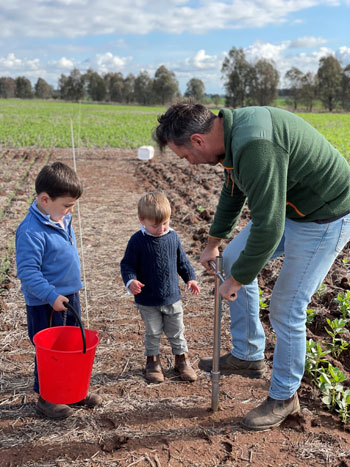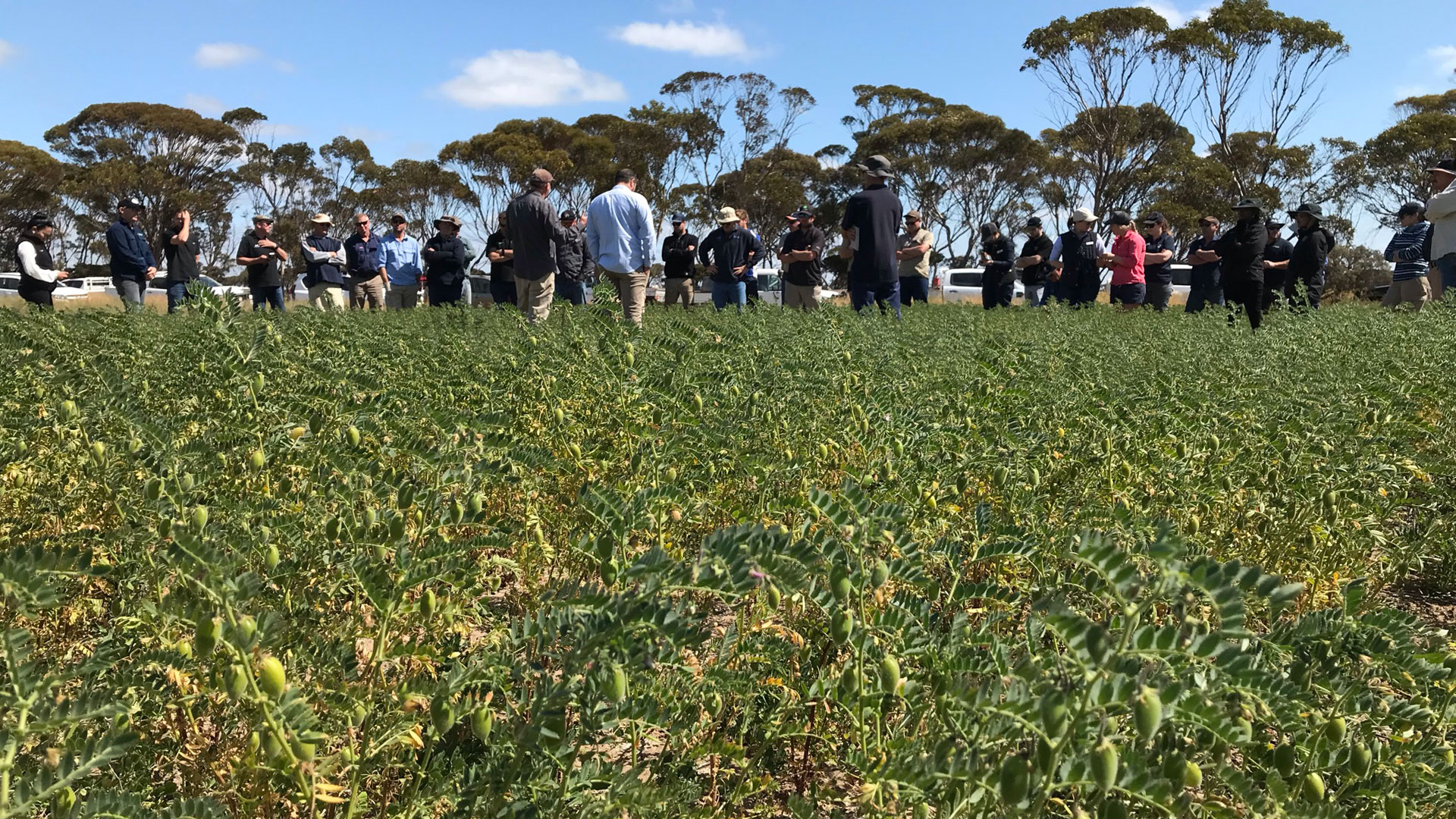Key points
- Pulse profitability is being targeted in four new GRDC research investments
- Each project will demonstrate locally relevant tools to reduce the risk and boost profitability of pulse crops
GRDC’s latest investment in pulse agronomy is aimed at closing the national yield gap in pulse species.
The four projects have a local focus; however, strong linkages between these projects will also enable a broader understanding of the main causes of the pulse yield gap.
The projects are led by Agriculture Victoria, the South Australian Research and Development Institute, Brill Ag in NSW and the Grower Group Alliance in Western Australia, in collaboration with local researchers and grower groups.
A ‘hub and spoke’ model of learning centres will see major research validation sites complemented by smaller local demonstration trials focusing on local adoption and needs.
South
In Victoria and SA, pulses provide weed and disease break crops that can be lucrative in their own right. Trials will examine the economic impact of pulses on farm profitability, disease management and integrated weed management strategies.
Trials began in 2021 and, among other objectives, have already demonstrated the fit of herbicide-tolerant lentils in the farming system for weed management.
New lentil varieties that combine imidazolinone and clopyralid tolerance will be available in the next year. In Victoria, weed management trials aimed at controlling vetch demonstrated that vetch seed-set could be reduced to zero and grain yields maintained through growing this variety on soil with clopyralid residues and applying registered herbicide practices.
In comparison, a strategy based on conventional lentil varieties resulted in 23 per cent grain yield loss with higher levels of vetch seed-set. Future advances in genetic tolerance to herbicides are expected to improve vetch control in lentils.

SARDI’s Sarah Day and Dr Penny Roberts present pulse research and validation trials at South Australia’s Melrose Expo in 2021. Photo: SARDI.
Dry conditions in SA in 2021 highlighted the importance of selecting the correct herbicide in pulses. Many pulses were sown dry, resulting in ineffective weed control from pre-emergent herbicides and weeds germinating at the same time or later than the crop.
Small, infrequent rainfall events post-sowing caused damage from some Group 5 (Group C) herbicides. Herbicide choice is important in reducing risk of crop injury, particularly for lentils, which are sensitive to these herbicides in dry conditions. This choice will depend on a grower’s attitude towards risk and experience with products, soil type, target weeds, environmental conditions, herbicide solubility and leaching rate.
It is important to remember that product label rates, plant-back periods and directions for use must be adhered to.
North
In New South Wales, the focus is on quantifying the yield gap, understanding how the yield gap can be closed and how additional value is provided via nitrogen fixation to boost the yields of subsequent crops.

Jim and Harry are eager to learn as their dad, agronomist Rohan Brill of Brill Ag, samples soil at Ganmain, NSW. Photo: Rohan Brill.
The research will assist growers to chase high-value markets with species such as lentils in the western subregions and chickpeas in the more northern subregions of NSW.
An important part of understanding the yield gap is matching soils or soil amendments to particular pulse species and effective management of weeds and diseases. Consequently, trials target regions with specific soil challenges – such as sodicity and acidity – and locations where previous applied research has been limited.
Interim results from 2021 demonstrated the importance of selecting the right species for the environment. Done well, this led to some phenomenal results, such as faba beans that yielded up to 6.3 tonnes per hectare, 5.2t/ha and 4.9t/ha at Parkes, Caragabal and Ganmain respectively.
Chickpeas were a consistent performer with yields above 2t/ha across most sites, ranging from the acidic loams of Canowindra and Barellan to the dispersive and occasionally waterlogged soils of Caragabal and Parkes.
The project will calculate a nitrogen balance of each pulse species at each site. This will consider the proportion of nitrogen derived from fixation and that which is exported in grain to better understand the net nitrogen benefit for each species and agronomic management option.
West
GRDC analysis indicates growers are aware of the benefits of growing a legume in their rotation but have concerns about pulse reliability and profitability, and lack confidence in their production consistency.

Growers inspect a CBA Captain chickpea bulk-up crop at the Pulse Association of the South East (PASE) field walk at Salmon Gums in 2021. Photo: Mark Seymour
In the west, the project is looking to increase the frequency of grain legumes grown in the state by demonstrating best practice and measuring the benefits of growing grain legumes in the year of production and to the following crop.
This will include demonstrating recent advances in grain legume genetics, acid-tolerant rhizobia and on-farm management techniques. Field trials will commence in 2022.
The project seeks to generate a new groundswell in developing the necessary production expertise and hopes the new capabilities will present a ‘Goldilocks moment’ (just right) for grain legumes in WA.
More information: Dr Jason Brand, 0409 357 076, jason.brand@agriculture.vic.gov.au; Rohan Brill, 0488 250 489, rohan@brillag.com.au; Mark Holland, 0429 202 393, mholland@gga.org.au; Dr Penny Roberts, 0436 678 982, penny.roberts@sa.gov.au

























































